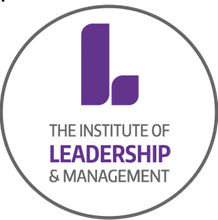As a result of their Covid contingency plans, leaders have been forced to think very differently about their organisation’s design. That’s especially true in two areas: structure and culture.
Dispersed, collaborative working has encouraged a move towards flatter structures, as leaders now realise they don’t need so many layers of management. So, that’s a win for efficiency. But at the same time, culture has come under increasing strain.
In particular, I’m hearing a lot of anecdotal evidence about challenges around the absorption of new staff, that workers’ probationary periods are being extended more often and that attrition among new hires is rising in many firms.
Why is this happening?
Firstly, the sharp drop in regular, in-person contact between staff at different levels means it’s much harder to build relationships. The simple step of going over to someone’s desk for a quick word has been replaced by a fog of often lengthy online meetings between larger groups. Communicating culturally has become more difficult. It’s harder to learn processes and settle differences of opinion.
Secondly, if leaders don’t know you very well because of those issues, they’ll be less inclined to recommend you for opportunities (“Eve is really bright – you should get her to handle this…”) All of which is making the earliest stage of people’s careers a rather lonely and stressful place – particularly when you factor in people’s domestic working environments. Imagine being a 22-year-old graduate taking on a high-pressure first job from a bedroom in shared accommodation, with four housemates toing and froing. Hardly ideal.
Alongside those developments, a couple of crucial technology trends are in progress. One is that organisations are wading further into automation. Furlough has forced employers to re-examine what different categories of workers do, how they do it – and whether certain tasks could be handed off to artificial intelligence (AI) tools to create efficiencies.
Just as importantly, organisations are becoming far more conversant with the world of crypto. We know at least 60 public companies have reported the purchase of cryptocurrencies during the pandemic – whether to add to their balance sheets and diversify their finances, or simply to gain experience with using them. This suggests we could see new business models emerge, such as:
Organisational crypto tokens and new payment methods Think of an organisation as large and wide-ranging as Disney enabling consumers to pay for all its different goods and services – for example, toys, streaming, theme-park entry – with a proprietary ‘Disneycoin’. Perks, discounts, and preferential deals would help customers feel more like valued members. Using the suppliers’ own token may help secure not only discounts on purchases, but capital appreciation of the tokens held.
Use of non-fungible tokens (NFTs) as stamps of authentication This could be particularly useful in the mortgage arena – ensuring that all relevant documentation pertaining to your home ownership is certified under a secure NFT.
Location coins like Miamicoin Designed to fund local infrastructure and economic development.
What does all this mean for leaders?
Priority One is boosting employees’ digital literacy. The Covid era’s mass migration to Zoom and Teams advanced this quite dramatically. But with a host of new business models coming through, we need to push this learning even further and faster.
Priority Two is significantly raising workers’ understanding of how the world around them is changing, so they won’t be daunted by the pace of change.
Priority Three is getting employees to take much more responsibility for their own learning and careers, and training them to enhance their resilience – raising their capacity to respond in tough situations so they don’t internalise difficulties.
Priority Four is providing staff with as much clear, user-friendly, online information as possible about how to execute key tasks – whether they’re organisation-specific, or even something as simple as how to write different types of standard business letters.
Priority Five is teaching staff the art of creating a horizon scanning radar: “What sorts of jobs are your kids or younger friends getting into? How are your local businesses changing the way they operate?” Those insights could prove invaluable.
From what I’ve seen during the pandemic, the cultures that have performed particularly well and kept staff morale high are all heavily communication based. Meanwhile, procedural cultures – for example, “Our dealing office is in Broadgate, risk management is in Chiswick, the back office is in Darlington, and each location has its own rules” – have floundered.
There are lessons for us all here in terms of the mindset that leaders are going to need while managing the workplace over the next five to 10 years.
Voices from our community: Rohit Talwar is CEO of Fast Future, a Keynote Speaker and Futurist.




